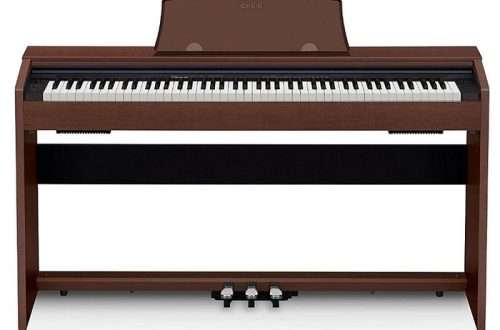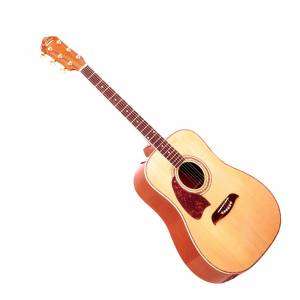Ways to play the guitar
Contents
How much has already been said and discussed about how you can play the guitar! All kinds of tutorials (from professional-tedious to primitive-amateurish), numerous Internet articles (both sensible and stupid), online lessons – everything has already been reviewed and re-read several times.
You ask: “Why should I waste my time studying this article if there is more than enough information around?” And then, it’s quite difficult to find a description of all the ways to play the guitar in one place. After reading this text, you will be convinced that there are still places on the Internet where information about the guitar and how to play it is presented concisely and accurately.
What is a “method of sound production”, how does it differ from a “playing method”?
At first glance, these two concepts are identical. In fact, the difference between them is significant. A stretched guitar string is the source of sound and how we make it vibrate and actually sound is called “method of sound production”. The method of sound extraction is the basis of the playing technique. And here “game reception” – This is in some way a decoration or addition to the extraction of sound.
Let’s give a specific example. Ring all the strings with your right hand – this method of producing sound is called blow (alternating blows – the battle). Now hit the strings in the vicinity of the bridge with the thumb of your right hand (the blow should be performed in the form of a sharp turn or swing of the hand towards the thumb) – this playing technique is called tambourine. The two techniques are similar to each other, but the first is a method of extracting sound and is used quite often; but the second one is in some way a type of “strike”, and therefore is a technique for playing the guitar.
Read more about the techniques here, and in this article we will focus on describing the methods of sound production.
All methods of guitar sound production
Beating and striking are most often used as an accompaniment to singing. They are quite easy to master. The most important thing is to observe the rhythm and direction of hand movements.
One type of strike is rasgeado – a colorful Spanish technique, which consists of alternately striking the strings with each of the fingers (except the thumb) of the left hand. Before performing rasgueado on the guitar, you should practice without the instrument. Make a fist with your hand. Starting with the little finger, springily release the pinched fingers. Movements should be clear and elastic. Have you tried it? Bring your fist to the strings and do the same.
Next move – the shooter or pinch play. The essence of the technique is to alternately pluck the strings. This method of sound production is played by standard fingerpicking. If you decide to master tirando, then pay special attention to your hand – when playing it should not be clamped in the hand.
Прием friends (or playing with support from an adjacent string) is very characteristic of Flamenco music. This method of playing is easier to perform than tirando – when plucking a string, the finger does not hang in the air, but rests on the adjacent string. The sound in this case is brighter and richer.
Keep in mind that tirando allows you to play at a fast tempo, but playing with a support significantly slows down the guitarist’s performance tempo.
The following video presents all the above-mentioned methods of sound production: rasgueado, tirando and apoyando. Moreover, apoyando is played predominantly by the thumb – this is the “trick” of flamenco; a single-voice melody or a melody in the bass is always played on a support with the thumb. When the tempo accelerates, the performer switches to plucking.
Slap can also be called exaggerated plucking, that is, the performer pulls the strings in such a way that, when they hit the guitar saddle, they make a characteristic clicking sound. It is rarely used as a method of producing sound on a classical or acoustic guitar; here it is more popular in the form of a “surprise effect”, imitating a shot or the crack of a whip.
All bass players know the slap technique: in addition to picking up the strings with their index and middle fingers, they also hit the thick upper strings of the bass with their thumb.
An excellent example of the slap technique can be seen in the following video.
The youngest method of sound production (it is no more than 50 years old) is called tapping. One can safely call the harmonic the father of tapping – it was improved with the advent of ultra-sensitive guitars.
Tapping can be one- or two-voice. In the first case, the hand (right or left) strikes the strings on the guitar neck. But two-voice tapping is similar to the playing of pianists – each hand plays its own independent part on the guitar neck by striking and plucking the strings. Due to some similarities with playing the piano, this method of sound production received a second name – piano technique.
An excellent example of the use of tapping can be seen in the unknown film “August Rush”. The hands in the rollers are not the hands of Fradie Highmore, who plays the role of the boy genius. In fact, these are the hands of Kaki King, a famous guitarist.
Everyone chooses for themselves the performance technique that is closest to them. Those who prefer to sing songs with a guitar master the technique of fighting, less often busting. Those who want to play pieces study tirando. More complex blind and tapping techniques are needed for those who are going to connect their lives with music, if not from a professional side, then from a serious amateur side.
Playing techniques, unlike methods of sound production, do not require much effort to master, so be sure to learn the technique of performing them in this article.



